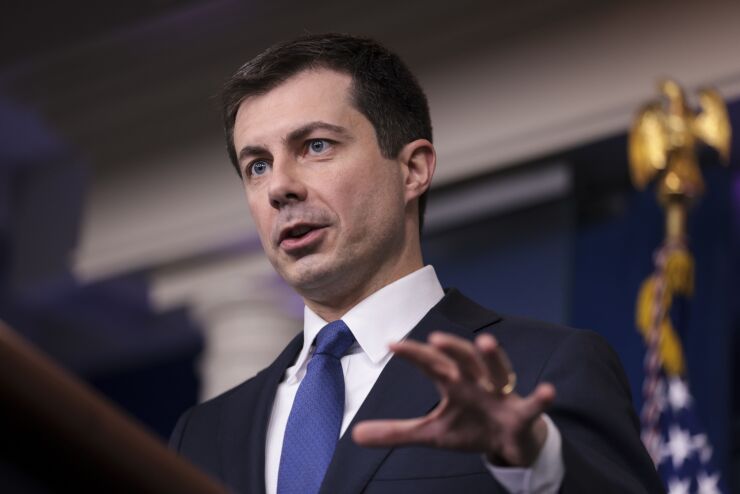The Biden administration this week released proposed rules for its electric vehicle charging station network program, with states facing a tight summer deadline to submit plans to secure a piece of the funds.
The proposed rules mark a key step in the development of the $7.5 billion National Electric Vehicle Infrastructure program, one of the most high-profile investments in the Infrastructure and Jobs Act.
The rules lay out minimum standards and requirements for states, which will be responsible for building out the 500,000-station national network. States need to submit their plans by August 1.

"The proposed rules lay out the 'what', and the state plans more or less lay out the 'how,'" said Miles Muller, an attorney at the Natural Resources Defense Council Inc., a member of the National EV Charging Initiative.
“This is a strong foundation for building out a national charging network that makes it as easy to charge your EV as fill up a gas car," Muller said of the proposed rules.
The guidance come as gas prices hit another record high in the U.S., with the national average climbing to less than two pennies under $5 a gallon for the first time, according to AAA.
The administration's goal is to have electric vehicles account for 50% of all vehicle sales by 2030. Electric vehicle sales doubled in 2021 to 608,000 from 308,000 in 2020 and are expected to double again in 2022, according to the Department of Energy.
“These new ground rules will help create a network of EV chargers across the country that are convenient, affordable, reliable and accessible,” Secretary of Transportation Pete Buttigieg said in a statement.
The program provides $5 billion in formula funding over five years to states and $2.5 billion in competitive grants for things like increasing access in underserved areas and improving air quality.
More than $600 million will be made available to states in fiscal 2022.
The proposed rules did not bring many surprises to the industry, Muller said, adding that the NRDC hopes some provisions will be strengthened, such as requiring stations to accept a variety of payment options like prepaid debit cards.
The
The U.S. DOT will take comments for 60 days before finalizing rules. The comment period will extend past the August 1 state deadline, but the proposed rules should provide sufficient preliminary guidance, said Nancy Ryan, a partner in the firm eMobility Advisors and one of the organizers of the National EV Charging Initiative.
The transportation department could claw back the funds — and send them to local governments — if a state fails to submit a plan or doesn’t take action to implement it.
The program allocates the biggest chunk of the funds to Texas, at $407 million. California is next in line, with $383 million. No other state receives more than $200 million, though Florida comes close at $198 million.
So far, Texas is the only state that has submitted a plan, though the Joint Office of Energy and Transportation, which is overseeing the program, asked the state to redo the plan, Ryan said.
“Most states are hard at work at it,” she said.
The program requires a 20% minimum local match, which the industry expects to come in part from private dollars, Ryan said.
“This is an important federal investment, but it’s a drop in the bucket” for what will be needed to fully scale up a national system, she said. “This money has to leverage private sector investment to achieve that scale. It’s a key criteria for success.”





